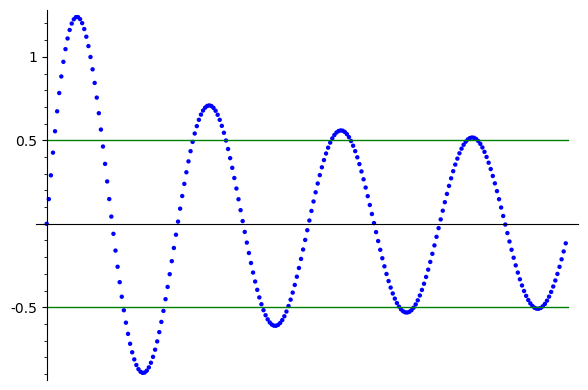Limsups and Liminfs of Sets
08 Nov 2020 - Tags: quick-analysis-tricks
I’m in a measure theory class right now, and I think it’s important to be properly comfortable with measure theory in a way that I’m currently not. It has deep connections with things that I find very interesting (Descriptive Set Theory, Ergodic Theory, their intersection in Amenable Groups, etc.) and it’s one of my go to examples of an “obviously useful” branch of math. If you can apply your interests to measure theory somehow, I think that’s a compelling argument to fend off questions of “why is this worthwhile” (at least from other mathematicians).
All this to say I’ve started reading more measure theory books, though it makes my pile of unread logic and algebra books sad. In particular I bought a copy of Halmos from an online used bookstore for $8 (!!), and it’s a fantastic read so far. I wanted to highlight one particular observation that, while obvious in hindsight, was extremely helpful for me. Hopefully by posting about it here, I’ll also find it more memorable. While this isn’t a “trick” in the same sense as the other posts in this series, I still feel like it fits here.
If
I think I didn’t see this because I was too focused in on generalizing my
understanding of

If this is your sequence
Here
Not only does this make it much more obvious that these definitions are dual, it more readily generalizes to the definition for sets:
(As a quick check in – why are the two definitions of
Because I liked my intuition for
As with all realizations, I should have seen this much sooner. It’s a common
trick in descriptive set theory to pass between logical constructors and
set theoretic operations. These are entirely natural, and correspond to a
correspondence between the (syntactic) boolean algebra of propositions, and the
(semantic) boolean algebra of sets. Yet again I’m talking about syntax and
semantics on this blog, and yet again I’m promising a post detailing a few
of my favorite examples. For now though, let’s write this one example out explicitly:
Say we have a family of properties
Quantifiers might seem tricky at first, but notice
This trick works more broadly too1. For any index set
Since we only know that countable setwise operations are allowed in measure theory, much of descriptive set theory amounts to showing that certain quantifiers only need to range over countable sets.
Of course, through this lens, the description in Halmos is obvious:
Do you see why this also shows that
This viewpoint is useful not only in understanding what
I think this lens sheds some light on
Dually,
-
It turns out viewing quantifiers as generalized conjunctions/disjunctions works very broadly! This is a useful viewpoint to take in many settings throughout logic. In